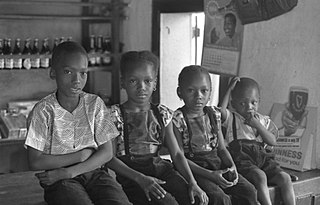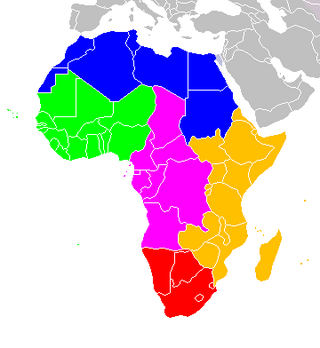| Regions with significant populations | |
|---|---|
| Freetown | |
| Languages | |
| English, Krio, Hebrew | |
| Religion | |
| Judaism |
| Part of a series on |
| Jews and Judaism |
|---|
The history of the Jews in Sierra Leone date back at least to the 15th century, when Sephardi Jewish traders and explorers arrived in the region from Portugal.
During the late 15th and early 16th centuries, Portuguese Jews escaping religious persecution in Portugal during the Portuguese Inquisition formed Jewish communities along the coasts of the Upper Guinea from, Sierra Leone to Senegal. These Portuguese settlers, known as lançados, married local African women and formed families. These mixed-race Black Sephardi communities are often known as Luso-Africans. Much early commerce in Sierra Leone was conducted by lançados who sailed to and from the region to S. Domingos, located north of present-day Bissau. Mixed-race Black Sephardi Jews in the region were referred to as filhos de terra and were generally considered "Portuguese". [1]
A small of number of European and American Jews settled in the British Sierra Leone Colony and Protectorate between 1831 and 1934. Some of the Jewish merchants who settled in Sierra Leone were an important part of the colonial European population and helped pioneer European commerce in the hinterlands of Sierra Leone. [2]

African Jewish communities include:
The lançados were settlers and colonizers of Portuguese origin in Senegambia, Cabo Verde, Guinea, Sierra Leone, and other areas on the coast of West Africa. Many were Jews—often New Christians—escaping persecution from the Portuguese Inquisition.

Bunce Island is an island in the Sierra Leone River. It is situated in Freetown Harbour, the estuary of the Rokel River and Port Loko Creek, about 20 miles upriver from Sierra Leone's capital city Freetown. The island measures about 1,650 feet by 350 feet and houses a castle that was built by the Royal Africa Company in c.1670. Tens of thousands of Africans were shipped from here to the North American colonies of South Carolina and Georgia to be forced into slavery, and are the ancestors of many African Americans of the United States.
The Petite Côte is a stretch of coast in Senegal, running south from the Cap-Vert peninsula to the Saloum Delta, near the border with the Gambia.
West African Pidgin English, also known as Guinea Coast Creole English, is a West African pidgin language lexified by English and local African languages. It originated as a language of commerce between British and African slave traders during the period of the transatlantic slave trade. As of 2017, about 75 million people in Nigeria, Cameroon, Ghana and Equatorial Guinea used the language.

Sahelian Jews historically known as Jews of the Bilad al-Sudan describes West African Jewish communities connected to known Jewish communities who migrated to West Africa as merchants for trading opportunities. Various historical records state that at one time, they were present in the Ghana Empire, the Mali Empire, the Mossi Kingdoms and the Songhai Empire, which was then called the Bilad al-Sudan "Land of the Blacks".

The Temne, also called Atemne, Témené, Temné, Téminè, Temeni, Thaimne, Themne, Thimni, Timené, Timné, Timmani, or Timni, are a West African ethnic group. They are predominantly found in the Northern Province of Sierra Leone. Some Temne are also found in Guinea. The Temne constitute the largest ethnic group in Sierra Leone, at 35.5% of the total population, which is slightly bigger than the Mende people at 31.2%. They speak Temne, a Mel branch of the Niger–Congo languages.

Rivières du Sud was a French colonial division in West Africa, roughly corresponding to modern coastal sections of Guinea. While the designation was used from the 18th to 20th century, the administrative division only existed from 1882-1891.

Portuguese Africans are Portuguese people born or permanently settled in Africa. The largest Portuguese African population lives in Portugal numbering over 1 million with large and important minorities living in South Africa, Namibia and the Portuguese-speaking African countries .The descendants of the Portuguese settlers who were born and "raised" locally since Portuguese colonial time were called crioulos. Much of the original population is unnumbered having been assimilated into Portugal, Brazil, and other countries.

The history of the Jews in Cape Verde deals with the Jews and Jewish communities in Cape Verde.
Bissau-Guinean Americans are Americans of Bissau-Guinean descent. As was the case with almost all current West African coastal countries, the first people in the United States from present-day Guinea-Bissau were imported as slaves. Thus, in the 21st century, there are many African Americans who have discovered, through DNA analysis, they descend mainly or at least partly, from Bissau-Guinean enslaved people.
North African Sephardim are a distinct sub-group of Sephardi Jews, who descend from exiled Iberian Jewish families of the late 15th century and North African Maghrebi Jewish communities.
Eastern Sephardim are a distinctive sub-group of Sephardic Jews mostly descended from Jewish families which were exiled from Iberia in the 15th century, following the Alhambra Decree of 1492 in Spain and a similar decree in Portugal five years later. This branch of descendants of Iberian Jews settled across the Eastern Mediterranean.
Luso-Africans are people of mixed Portuguese and African ancestry who speak Portuguese. The vast majority of Luso-Africans live in former Portuguese Africa, now referred to as Lusophone Africa, comprising the modern countries of Angola, Guinea-Bissau, Cape Verde, Mozambique, São Tomé and Príncipe, and Equatorial Guinea. A sizable number of Luso-Africans have also settled in Portugal where they form a racial minority. This ethnic identity arose from the sixteenth century as primarily male Portuguese settlers, often Lançados, settled in various parts of Africa, often marrying African women.
Megorashim is a term used to refer to Jews from the Iberian Peninsula who arrived in North Africa as a result of the anti-Jewish persecutions of 1391 and the expulsion of Jews from Spain in 1492. These migrants were distinct from pre-existing North African Jews called Toshavim. The Toshavim had been present in North Africa since ancient times, spoke the local languages, and had traditions that were influenced by Maghrebi Islam. The Megorashim influenced North African Judaism, incorporating traditions from Spain. They eventually merged with the Toshavim, so that it is now difficult to distinguish between the two groups. The Jews of North Africa are often referred to as Sephardi, a term that emphasizes their Iberian traditions.
The history of the Jews in Mali dates back to the 8th century CE. Today, around 1,000 descendants of Jews live in Mali, mostly in or near Timbuktu.
The history of the Jews in Senegal has its origins in the Jews of Bilad al-Sudan, those Jewish communities in West Africa dating to the 14th century. Today only a small number of Jews live in Senegal, mostly of foreign origin.
The history of the Jews in the Gambia dates back to the 16th and 17th centuries, when Sephardi Jewish explorers and traders came to the region of Senegambia. In contemporary Gambia, a Jewish community of local converts has emerged during the 2010s and 2020s.
The history of the Jews in Guinea-Bissau date back at least to the 15th century, when Sephardi Jewish traders and explorers arrived in the region from Portugal. Portuguese Sephardi Jews maintained a presence in colonial Guinea for centuries. The contemporary Jewish community in Guinea-Bissau is small.
The history of the Jews in Guinea date back at least to the 15th century, when Sephardi Jewish traders and explorers arrived in the region from Portugal. The contemporary Jewish community in Guinea-Bissau is very small.